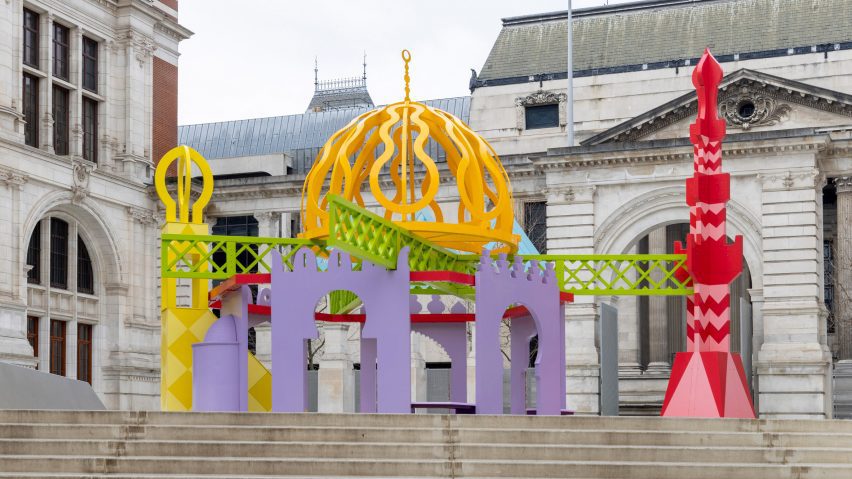
Shahed Saleem creates mosque pavilion as a "reconstruction of migrant histories"
London-based architect Shahed Saleem has created a colourful pavilion in the shape of a mosque, which has been erected at the V&A museum as part of this year's Ramadan Festival.
Saleem, who is of Indian heritage, designed the pavilion for the Ramadan Tent Project's annual festival, which celebrates the holy month of Ramadan.
He drew on his own lived experience as a second-generation immigrant for the design while aiming to capture the collective feelings of distance that are sometimes endured by the wider Muslim diaspora.
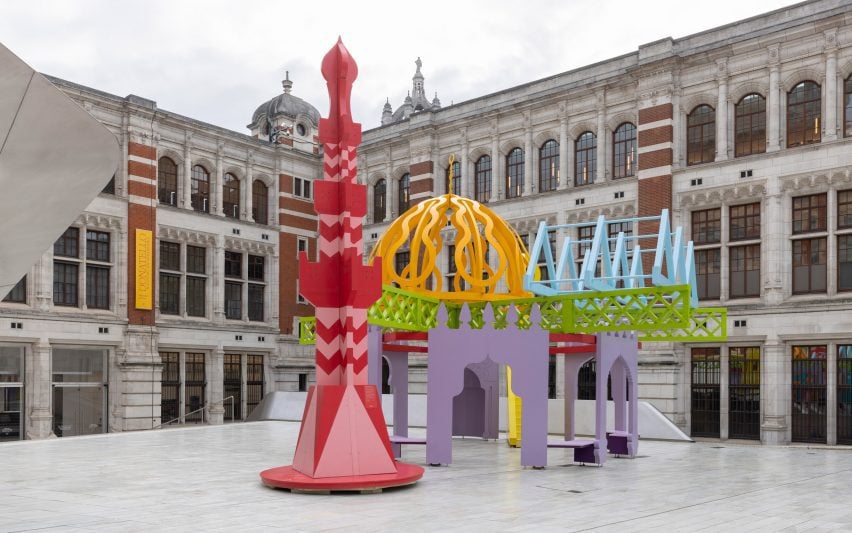
This led him to design the pavilion as a reconstructed mosque with different architectural motifs and bright colours acting as various fragments of identity.
"As a child of immigrants I have experienced and learned how to negotiate different cultural worlds," Saleem told Dezeen.
"I have seen how migrant communities deal with loss and distance from homelands, and how they attempt to reconstruct and reassemble cultural memories and histories in a new place," he continued.

The pavilion is made up of elements found in mosque architecture including arches, a dome, a staircase, a roof and a mihrab – a semicircular niche that orients the direction of prayer.
"The pavilion represents this by showing historic fragments as being collaged and held together in a new structural frame," Saleem said.
"There is an overall sense of porousness and precarity, suggesting that the new narratives created through the reconstruction of migrant histories and experiences is an ongoing and dynamic process."
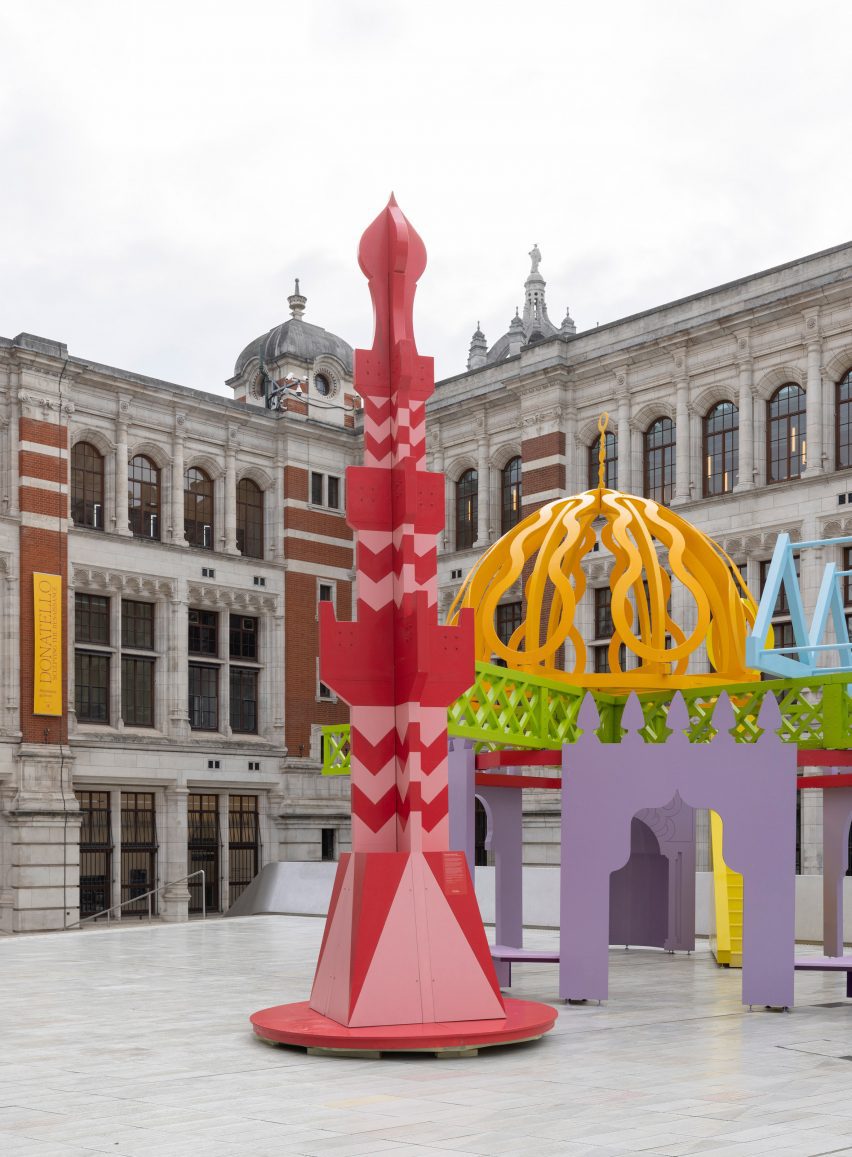
Saleem built the Ramadan Pavilion from plywood sheets glued and screwed together with steel brackets and fixings, while glulam timber was used for its structural and reinforcement elements.
Meanwhile, the minaret – the red and pink striped tower – has a vertical steel post and steel-framed base. In traditional mosques, the minaret is built into or stands next to the mosques and is used to call Muslims to pray.
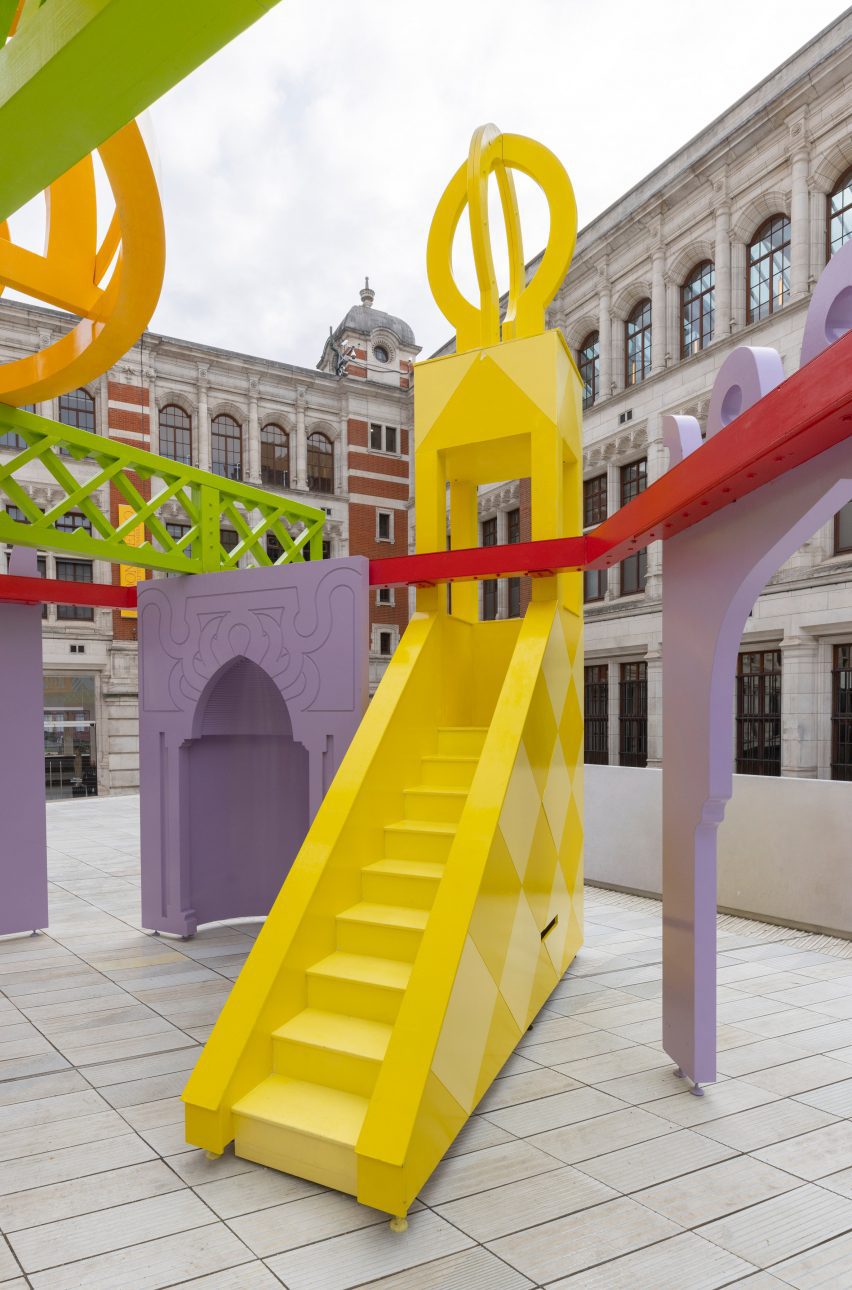
"Through the colours, finish and shapes, I wanted to give a sense of fun and playfulness, to suggest a childlike innocence and also to give joy," Saleem explained.
"This is because issues around migrants and Islam in Europe are highly politicised, and the aesthetics of the pavilion suggests that joy and commonality is also possible and offers another way of engaging with other cultures."
For reference, the architect turned to the Victoria & Albert Museum (V&A's) collection of prints and photographs of mosques and other examples of Islamic architectural design, as well as the architecture of British mosques from the 1960s to the present day.
"Each of these elements has been derived from 19th and 20th-century drawings and photographs in the V&A prints and drawings collection which depict historic Islamic architecture from north Africa to India," Saleem said.
"I have taken references from these images to create the elements for the pavilion. The pavilion is therefore a postcolonial reinterpretation of colonial representations of the Islamic world."
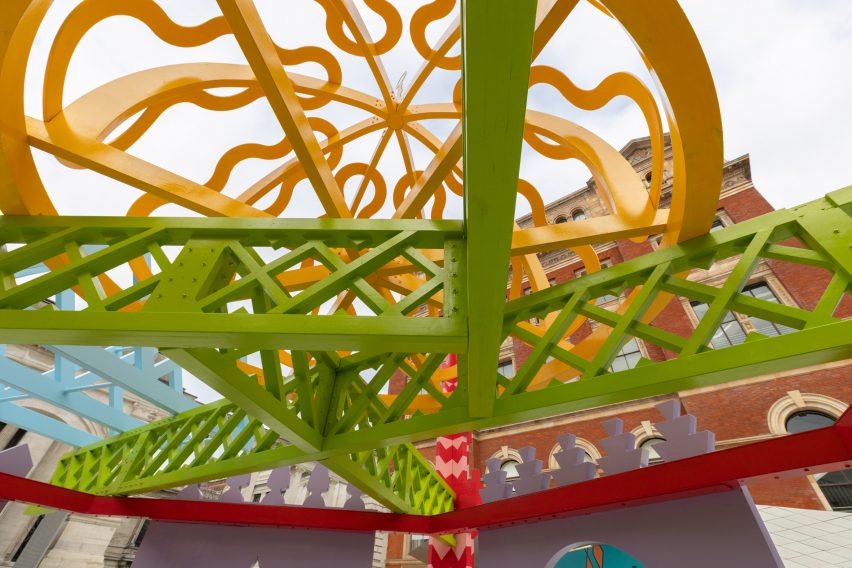
This year, Ramadan begins on Wednesday 22 March and lasts for 30 days. The month is observed by Muslims worldwide as a month of fasting, prayer, reflection and community.
The Islamic calendar follows the lunar cycle, which means that Ramadan falls approximately 10 days earlier each year in the Gregorian calendar.
Visitors to the Ramadan Pavilion will be able to attend a series of curated events, performances and workshops.
Mosques have been used as sources of inspiration for other installations around the world. Saudi Arabian artist Ajlan Gharem's Paradise Has Many Gates installation reimagines the traditional mosque as a cagey, steel-wired structure.
At the Islamic Arts Biennale in Saudi Arabia, Pakistani architect Yasmeen Lari designed three dismantlable mosques to demonstrate the potential of bamboo.
The Ramadan Pavilion is on display at the V&A's Exhibition Road Courtyard in South Kensington until 1 May 2023 as part of the Ramadan Festival. See Dezeen Events Guide for an up-to-date list of architecture and design events taking place around the world.
The photography is courtesy of V&A.
Project credits:
Architecture: Shahed Saleem
Supported by: The Diriyah Biennale Foundation, COSARAF Charitable Foundation, the University of Westminster, RIBA, AKT II.
Fabrication and install: SD Fabrication